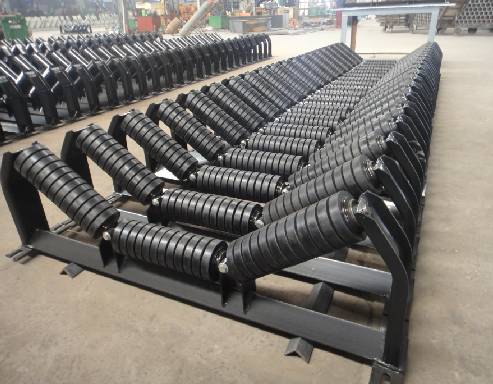 Afrikaans
Afrikaans  Albanian
Albanian  Amharic
Amharic  Arabic
Arabic  Armenian
Armenian  Azerbaijani
Azerbaijani  Basque
Basque  Belarusian
Belarusian  Bengali
Bengali  Bosnian
Bosnian  Bulgarian
Bulgarian  Catalan
Catalan  Cebuano
Cebuano  Corsican
Corsican  Croatian
Croatian  Czech
Czech  Danish
Danish  Dutch
Dutch  English
English  Esperanto
Esperanto  Estonian
Estonian  Finnish
Finnish  French
French  Frisian
Frisian  Galician
Galician  Georgian
Georgian  German
German  Greek
Greek  Gujarati
Gujarati  Haitian Creole
Haitian Creole  hausa
hausa  hawaiian
hawaiian  Hebrew
Hebrew  Hindi
Hindi  Miao
Miao  Hungarian
Hungarian  Icelandic
Icelandic  igbo
igbo  Indonesian
Indonesian  irish
irish  Italian
Italian  Japanese
Japanese  Javanese
Javanese  Kannada
Kannada  kazakh
kazakh  Khmer
Khmer  Rwandese
Rwandese  Korean
Korean  Kurdish
Kurdish  Kyrgyz
Kyrgyz  Lao
Lao  Latin
Latin  Latvian
Latvian  Lithuanian
Lithuanian  Luxembourgish
Luxembourgish  Macedonian
Macedonian  Malgashi
Malgashi  Malay
Malay  Malayalam
Malayalam  Maltese
Maltese  Maori
Maori  Marathi
Marathi  Mongolian
Mongolian  Myanmar
Myanmar  Nepali
Nepali  Norwegian
Norwegian  Norwegian
Norwegian  Occitan
Occitan  Pashto
Pashto  Persian
Persian  Polish
Polish  Portuguese
Portuguese  Punjabi
Punjabi  Romanian
Romanian  Russian
Russian  Samoan
Samoan  Scottish Gaelic
Scottish Gaelic  Serbian
Serbian  Sesotho
Sesotho  Shona
Shona  Sindhi
Sindhi  Sinhala
Sinhala  Slovak
Slovak  Slovenian
Slovenian  Somali
Somali  Spanish
Spanish  Sundanese
Sundanese  Swahili
Swahili  Swedish
Swedish  Tagalog
Tagalog  Tajik
Tajik  Tamil
Tamil  Tatar
Tatar  Telugu
Telugu  Thai
Thai  Turkish
Turkish  Turkmen
Turkmen  Ukrainian
Ukrainian  Urdu
Urdu  Uighur
Uighur  Uzbek
Uzbek  Vietnamese
Vietnamese  Welsh
Welsh  Bantu
Bantu  Yiddish
Yiddish  Yoruba
Yoruba  Zulu
Zulu conveyor return idlers
Understanding Conveyor Return Idlers An Essential Component in Material Handling
Conveyor systems play a crucial role in modern material handling across various industries, from mining to manufacturing. Among the many components that contribute to the efficiency and effectiveness of conveyor systems, return idlers are fundamental yet often overlooked elements. Return idlers, positioned on the return side of a conveyor belt, serve essential functions that directly impact the performance and longevity of the conveyor system.
Understanding Conveyor Return Idlers An Essential Component in Material Handling
One of the critical roles of return idlers is to guide the conveyor belt along its intended path. Return idlers ensure that the belt stays centered, aligning it with the loading and unloading points. Misalignment can cause uneven wear on the belt and idlers, potentially leading to costly repairs and downtime. By keeping the belt correctly aligned, return idlers help extend the life of both the conveyor system and the materials being transported.
conveyor return idlers

Moreover, return idlers are often equipped with features that facilitate optimal functionality under varying conditions. For example, some idlers come with rubberized surfaces that reduce noise levels and minimize the risk of material degradation during transport. Others may be designed to handle specific load capacities, allowing for customization based on the unique requirements of an operation. This adaptability makes return idlers vitally important across different industries and applications.
The material used to construct return idlers also plays a significant role in their performance. Typically made from rugged materials like steel or composite polymers, these components must withstand harsh operating environments, including exposure to chemicals, dust, and extreme temperatures. The durability of return idlers translates to lower maintenance needs and reduced operational costs in the long run.
In conclusion, conveyor return idlers are indispensable components in material handling systems. Their primary functions—supporting belt weight, ensuring alignment, and enhancing operational efficiency—are critical for the smooth and effective transport of materials. Investing in high-quality return idlers and maintaining them properly can lead to substantial improvements in productivity and cost-effectiveness. As industries continue to rely on conveyor systems for material handling, understanding the importance of return idlers will become increasingly vital for enhancing system performance and achieving operational excellence. Therefore, it is essential for facility managers and engineers to prioritize the selection and maintenance of return idlers in their conveyor system designs.
-
Revolutionizing Conveyor Reliability with Advanced Rubber Lagging PulleysNewsJul.22,2025
-
Powering Precision and Durability with Expert Manufacturers of Conveyor ComponentsNewsJul.22,2025
-
Optimizing Conveyor Systems with Advanced Conveyor AccessoriesNewsJul.22,2025
-
Maximize Conveyor Efficiency with Quality Conveyor Idler PulleysNewsJul.22,2025
-
Future-Proof Your Conveyor System with High-Performance Polyurethane RollerNewsJul.22,2025
-
Driving Efficiency Forward with Quality Idlers and RollersNewsJul.22,2025





























